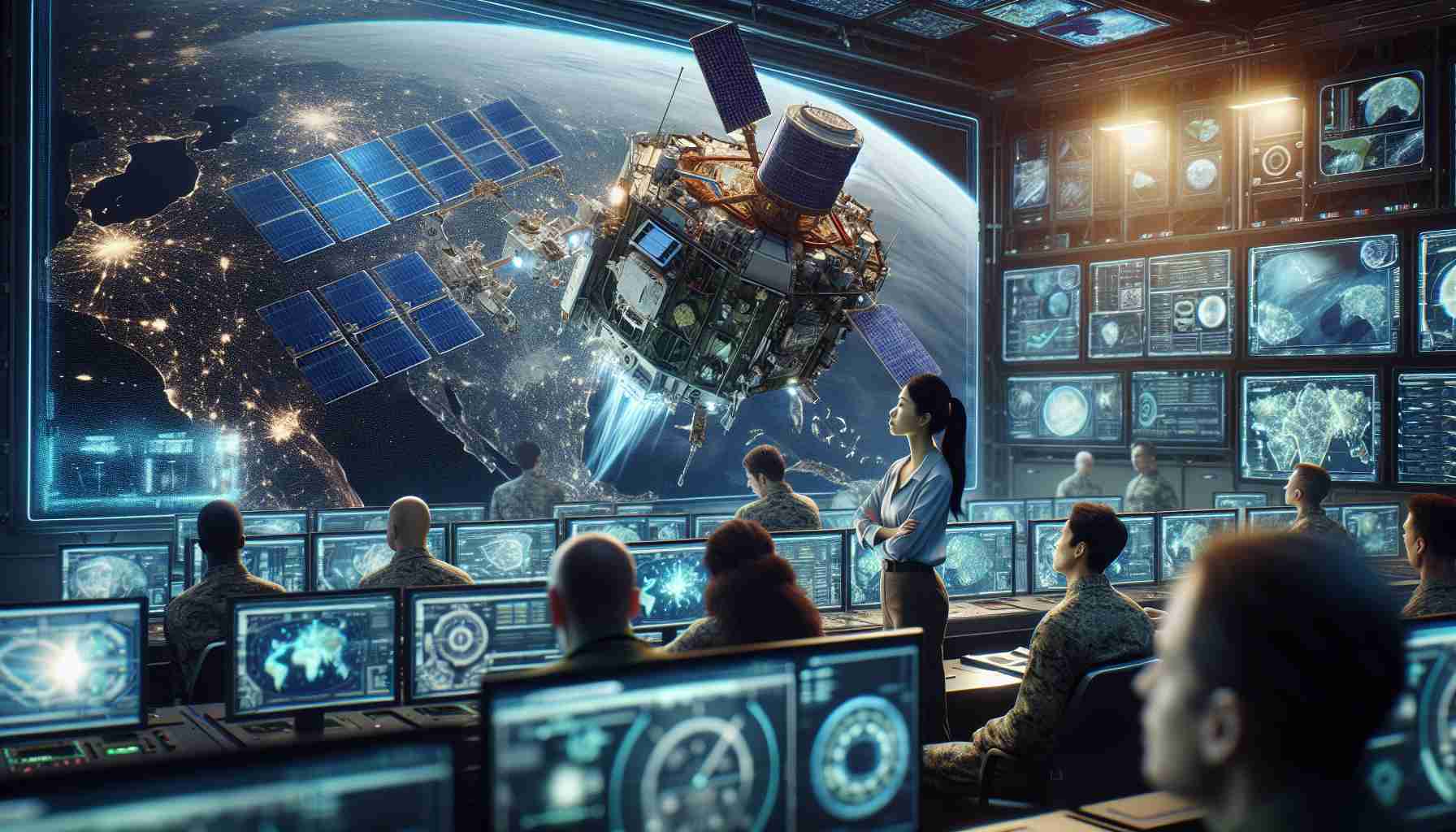
In a significant development within the space industry, the Space Development Agency (SDA) has announced the selection of 19 innovative companies for its ambitious HALO initiative. This groundbreaking program focuses on the rapid advancement of satellite technologies through a competitive acquisition process.
Participants in HALO will engage in experimental missions, facilitating a real-world testing environment for cutting-edge technologies intended for future satellite networks. The initiative aims to optimize these technologies prior to their incorporation into the SDA’s extensive Proliferated Warfighter Space Architecture, which is designed to enhance the capabilities of military communications and missile tracking.
Derek Tournear, the SDA Director, emphasized the utility of the HALO program at a recent symposium, highlighting its agile contracting process. An impressive 40 proposals were submitted for consideration, showcasing the enthusiastic industry response. The chosen companies range from major players like SpaceX to emerging firms such as Apex Technology and Muon Space, signaling a commitment to incorporating diverse technological innovations.
The selected vendors will operate under a flexible contract structure that promotes ongoing collaboration and swift task execution. Initial contracts will fund the creation and launch of two satellites within the next 12 to 18 months, with a focus on essential technologies like tactical data links and optical communication systems. Ultimately, the HALO program embodies a forward-thinking approach in military space operations, emphasizing testing and refinement before large-scale implementation.
New Frontiers in Military Space Technology: Addressing Emerging Challenges and Opportunities
As nations increasingly recognize the strategic importance of space, the realm of military space technology continues to evolve rapidly. Recent advancements not only involve satellite systems but also encompass a broader range of innovations that address emerging space security concerns. Key questions arise in this dynamic environment: What are the current trends in military space technology? What challenges and controversies accompany these changes? What advantages and disadvantages do these developments present?
Current Trends in Military Space Technology
The ascent of military space technology is marked by several critical trends. The ongoing militarization of space includes the deployment of anti-satellite (ASAT) weapons, an area where countries like Russia and China have made significant strides. Moreover, the increasing reliance on autonomous systems, such as drones and satellite-based surveillance, enhances military capabilities while raising ethical concerns. Nations are also prioritizing Space Situational Awareness (SSA) systems, designed to track objects in space and mitigate collision risks—a vital step as space becomes more congested.
Key Challenges and Controversies
One of the most pressing challenges in military space technology is the risk of escalation in international tensions. The development and potential deployment of ASAT systems could lead to an arms race in space, as nations bolster their capabilities to counter perceived threats. Moreover, the increase in military operations in space may result in the weaponization of space, contradicting existing treaties such as the Outer Space Treaty of 1967.
Another controversy lies in the ethical ramifications of using space technology for surveillance and reconnaissance. The potential for privacy violations escalates as satellites become more capable of capturing detailed images and data from the ground. Questions arise regarding the extent to which military organizations should be allowed to infringe upon civilian privacy in the name of national security.
Advantages and Disadvantages
Advantages of advancements in military space technology include enhanced communication and coordination among military forces, improved intelligence-gathering capabilities, and more effective missile defense systems. Additionally, innovations in satellite technology can lead to significant advancements in other sectors, such as disaster response and climate monitoring.
However, disadvantages include the escalation of military conflicts into space, potential for catastrophic collisions or space debris accumulation, and concerns regarding global security and privacy violations. The dual-use nature of space technologies means that innovations intended for military applications can also be repurposed for nefarious uses, posing risks to international stability.
Looking Forward
As military space technology advances, the balance between leveraging innovations for national security and ensuring global peace and cooperation remains delicate. Collaborative efforts among nations to establish guidelines for the responsible use of military technologies in space will be essential in mitigating risks.
Concluding Thoughts
The landscape of military space technology is shifting, characterized by rapid technological advancements and heightened geopolitical tensions. Addressing the accompanying challenges while harnessing the potential benefits will be critical for future developments in this crucial domain.
For more information on military space initiatives, visit the following resources:
– space.com
– defense.gov
– nasa.gov



